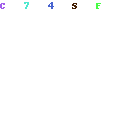Lower Back Pain? Find the Perfect Mattress for You
A debate that has raged for years is whether someone with back problems should have a firm or a soft mattress. Research has been conducted but there does not seem to be a consensus, even among orthopedic professionals. One that many of these studies point to is that the mattress should feel comfortable for the sleeper, whether the mattress is firm, soft, or somewhere in the middle. There have long been diverging opinions about what firmness is right in a mattress. One school of opinion says that people with back problems will do better with a firm mattress.
Another school of thought is that the true test is how the mattress feels to you and has less to do with labels and brand names. Remember that an industry standard for firmness does not exist. Find a firm mattress that works for you. There are many things to consider when purchasing a new mattress doing some research can make the process a little easier. On average, Americans spend over three thousand hours per year in bed. That is more time than we spend in our cars or at work. The benefits of sleep can never be overstated and the purchase of a new mattress can have long-lasting effects on your overall health and well-being. With consumers having more choices than ever before, it pays to know what type of mattress or sleep system is best suited to your lifestyle, health, and budget.
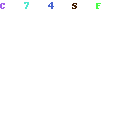
Possible Causes of Back Pain
Are there any sure-fire ways to deal with back pain? Back pain is one of the leading reasons that we seek medical care. Millions of Americans suffer the effects of injury and disease that are the causes of chronic back pain. The lower back is the most common area of complaint. In strictly monetary terms, Americans spend an estimated $50 billion a year treating low back pain. There are other financial and societal impacts associated with back problems. Every year, back pain causes millions of people to miss work back pain is the most common cause of people missing work for medical reasons.
Chronic Lower Back Pain
Chronic lower back pain is one of the most common neurological conditions second only to headaches. In short, whether you suffer from back pain or not, it costs everyone money. The financial costs aside, back problems can be a real pain. According to the medical community, most back pain involves injury or trauma to the muscles in the back or to the spine. Think of these muscular-skeletal injuries in the same way you look at a flat tire in your car. It usually occurs rather suddenly and can be fixed.
This is not to say that all back pain can be resolved, but injury or trauma is different from other mechanical causes of back pain. Thinking again of the car example, other components wear out slowly and are not immediately noticeable.
Over time, this normal wear and tear starts to affect the car’s handling. We have spinal structures that wear out over time, causing back pain that can be chronic and difficult to cope with. As our bodies age, physical changes to the spine can cause pain in the lumbar region of our back. The spine is made of bones called vertebrae and between each vertebra is a thick tissue disc that has several important functions. The disc is made up of two layers of tissue that surround a gelatin-like material. The outer layer of tissue is tough and fibrous while the inner layer is made of a very dense pulp-like tissue. So between the two bony vertebrae is the disc which acts as both a spacer and a shock absorber.
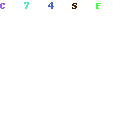
Lumbar Vertebrae
As part of the natural aging process, the discs are prone to shrink and compress has the effect of reducing the amount of space between the vertebrae. Many of us get shorter as we get older due to this natural degenerative process. In the lumbar spine are two vertebrae referred to as L4 and L5, the fourth and fifth lumbar vertebrae? A critical nerve root emerges from the spinal near the area of L4 and L5. The sciatic nerve runs through the pelvis and down to the legs, providing both motor and sensory nerve function.
Pressure on the disc, whether caused by natural aging or by excess strain on the back, can cause the disc to bulge and even rupture. When a bulge or rupture occurs between L4 and L5 it can put pressure on the sciatic nerve root. This pressure can result in lumbar back discomfort and pain, as well as pain in the legs and even permanent and irreparable damage to the nerve. The pain can become so severe that many people require a surgical repair or even removal of the disc. Degenerative diseases like arthritis could be the cause of back pain. Some of these causes can be serious and even life-threatening and require immediate medical intervention.
Everything from kidney stones to cancer can cause severe lumbar back pain. Never assume that back pain is the result of a strain or just old age.
Magnetic belts, creams, and herbal remedies often fall just of medical quackery. When it comes to coping with back pain, remaining pain-free while sitting or sleeping can be a journey of self-discovery. There is no substitute for receiving quality medical care that includes an accurate diagnosis. Only a qualified medical doctor can correctly diagnose and treat back pain.
Top 5 Best Back Pain Mattress
Zinus Memory Foam 12-inch Green Tea Mattress:
Zinus offers a variety of memory foam mattresses, and their Green Tea Memory Foam Mattress is known for its affordability and comfort. It is often praised for its pressure-relieving properties.
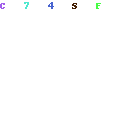
Linenspa 8-Inch Memory Foam and Innerspring Hybrid Mattress:
Linenspa’s hybrid mattress combines memory foam and innerspring coils to provide support and comfort. It’s a budget-friendly option that many users have found helpful for back pain.
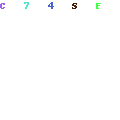
Classic Brands Cool Gel Memory Foam 14-Inch Mattress:
This mattress features gel-infused memory foam for temperature regulation and pressure relief. It’s available in various thicknesses and firmness levels, allowing you to choose the one that suits your preferences.
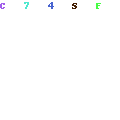
Signature Sleep Memoir 12-Inch Memory Foam Mattress:
Signature Sleep’s Memoir Memory Foam Mattress offers a comfortable and supportive memory foam surface. It is available in different thicknesses and has received positive reviews for relieving pressure points.
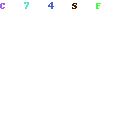
Tuft & Needle Original Mattress:
Tuft & Needle is known for its adaptive foam mattresses, which are designed to provide support and comfort. The Original Mattress is a popular choice that caters to a wide range of sleepers.
